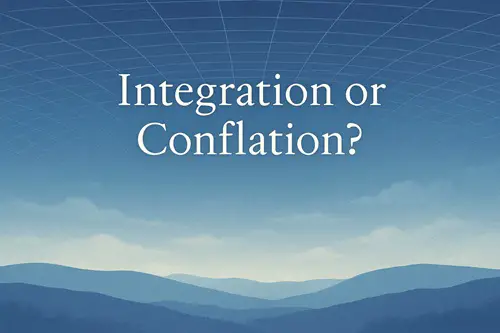|
TRANSLATE THIS ARTICLE
Integral World: Exploring Theories of Everything
An independent forum for a critical discussion of the integral philosophy of Ken Wilber
  Frank Visser, graduated as a psychologist of culture and religion, founded IntegralWorld in 1997. He worked as production manager for various publishing houses and as service manager for various internet companies and lives in Amsterdam. Books: Ken Wilber: Thought as Passion (SUNY, 2003), and The Corona Conspiracy: Combatting Disinformation about the Coronavirus (Kindle, 2020). Frank Visser, graduated as a psychologist of culture and religion, founded IntegralWorld in 1997. He worked as production manager for various publishing houses and as service manager for various internet companies and lives in Amsterdam. Books: Ken Wilber: Thought as Passion (SUNY, 2003), and The Corona Conspiracy: Combatting Disinformation about the Coronavirus (Kindle, 2020).
Check out my other conversations with ChatGPT Toward a Responsible Integration of Science and ReligionLessons from the Wilber ExperimentFrank Visser / ChatGPT
 The aspiration to integrate science and religion is not naïve, obsolete, or inherently incoherent. It is a recurring intellectual project arising whenever societies face fragmentation among their knowledge systems, worldviews, and existential commitments. Ken Wilber's work demonstrates both the urgency of this project and the difficulty of executing it with rigor. His failure to maintain methodological boundaries, distinctions in language, and epistemic integrity is not a reason to abandon the project altogether—but a reason to clarify how such integration could be undertaken responsibly. This follow-up essay explores a more disciplined path: one that respects epistemic diversity without collapsing domains, and one that treats both science and religion as evolving, self-correcting enterprises rather than frozen bodies of doctrine. I. The First Task: Clarifying What “Integration” MeansBefore integration can occur, the term itself must be defined. It cannot mean that science and religion are ultimately saying the same thing, nor that one must validate the other. Instead, integration must mean that:
Rather than a fusion of discourses, integration becomes a structured dialogue—more akin to diplomacy than marriage. Thus, integration is not ontological unification; it is epistemic pluralism with disciplined bridge-building. II. Distinguishing Domains Without HierarchyStephen Jay Gould's concept of Non-Overlapping Magisteria (NOMA) was widely criticized for creating an overly strict boundary between facts and values. Yet the underlying insight remains essential: domains of inquiry operate with different validation criteria. A responsible integration framework preserves distinctions such as:
Integration begins not by merging these, but by acknowledging their epistemic non-identity. III. Rules for Cross-Domain ConversationA responsible integrative framework requires explicit norms, such as: No causal claims across domains without empirical evidence. Saying meditation correlates with neural changes is legitimate; claiming meditation generates cosmic consciousness is metaphysics, not science. No metaphor may be treated as mechanism. Calling evolution “creative” or “intelligent” may be poetic; it does not license treating evolution as goal-directed unless supported by empirical evidence. No inference from subjective experience to universal ontology without philosophical justification. Mystical insights are data—not conclusions. All cross-domain claims must be reversible. If neuroscience can critique religious claims about consciousness, religion must also be permitted to critique the metaphysical assumptions of reductive materialism. These rules prevent integration from devolving into rhetorical conversion. IV. Models of Coexistence: Complementarity Rather Than ConflationA promising model for responsible integration is complementarity, analogous to the relation between particle and wave models in quantum physics. The map is not unified—the perspectives coexist because each reveals something the other obscures. Examples of emerging complementary integration include:
The point is not to force resolution prematurely, but to allow meaningful tension to remain productive. V. Habermas as a Counter-Model: Translation Rather Than DominationWhere Wilber assumes a preexisting metaphysical unity, Jürgen Habermas proposes a more modest approach: religious and scientific discourses may speak to shared human concerns, but must mutually translate into one another's public language. Religious claims must be reformulated into terms accessible to those outside the tradition; scientific claims must recognize the limits of instrumental rationality. Neither becomes the foundation of the other. Integration becomes a civic and epistemic practice—not a metaphysical proclamation. VI. The Proper Role of Spiritual Insight in an Integrated FrameworkA responsible integration does not dismiss spirituality. Instead, it reframes mystical experience as:
Spiritual claims may inform hypotheses about consciousness or well-being—but they cannot preempt or override empirical inquiry. VII. A Final Principle: Integration Must Be Iterative, Not ProclamatoryThe greatest lesson from Wilber's collapse into metaphysical overreach is that integration cannot be declared completed. It must evolve as science advances, religions reinterpret themselves, and philosophy refines its categories. Integration is not a system. It is an ongoing practice of disciplined conversation. Conclusion: The Integration We NeedA responsible integration of science and religion is possible—but only if it avoids the temptation to declare unity where none has been demonstrated. Rather than synthesizing worldviews into a single metaphysics, integration should:
Where Wilber attempted a grand synthesis, the future may require a more modest but more durable alternative: a pluralistic framework in which science and religion contribute different forms of insight to the same human project—without pretending they speak the same language or answer the same questions. Integration, done responsibly, is not the disappearance of boundaries, but the artful maintenance of them.
Comment Form is loading comments...
|